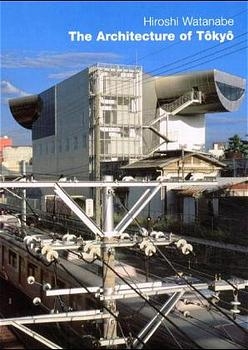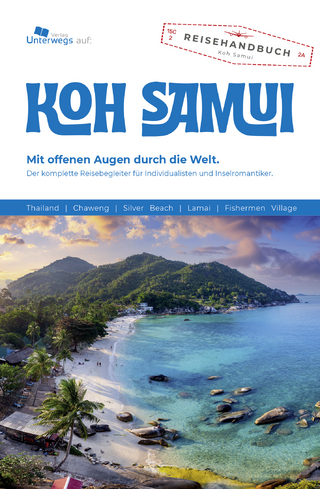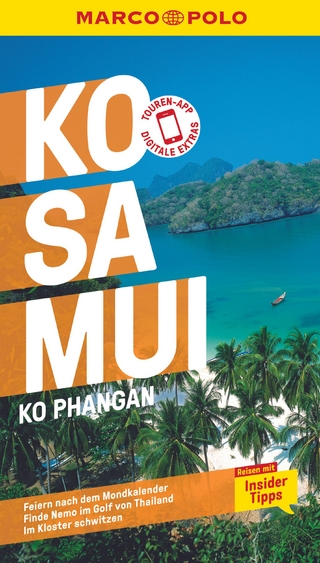
The Architecture of Tokyo
Edition Axel Menges (Verlag)
978-3-930698-93-6 (ISBN)
This is the first guide to introduce in one volume the architecture of the Tokyo region, encompassing Tokyo proper and adjacent prefectures, in all its remarkable variety. The buildings are presented chronologically and grouped into six periods: the medieval period (1185–1600), the Edo period (1600–1868), the Meiji period (1868–1912), the Taisho and early Showa period (1912–1945), the postwar reconstruction period (1945–1970) and the contemporary period (1970 until today). This comprehensive coverage permits those interested in Japanese architecture or culture to focus on a particular era or to examine buildings within a larger temporal framework. A concise discussion of the history of the region and the architecture of Japan develops a context within which the individual works may be viewed.
Nearly 600 buildings are presented, from 15th-century Buddhist temples to 20th-century cultural buildings, from venerable folkhouses to works by leading contemporary architects of Japan such as Kenzo Tange, Fumihiko Maki, Arata Isozaki, Hiroshi Hara, Toyo Ito and Riken Yamamoto as well as by foreign architects such as Norman Foster, Peter Eisenman and Steven Holl.
Hiroshi Watanabe studied architecture at Princeton University in Princeton, N. J., and at Yale University in New Haven, Conn. He has written extensively on contemporary Japanese architecture and on the work of architects from Western countries in Japan. He was the Japan correspondent for Progressive Architecture for many years. His writings include Amazing Architecture from Japan and the text for the monograph on the Marugame Hirai Museum by Alfredo Arribas (published by Edition Axel Menges). He also translated Space in Japanese Architecture by Mitsuo Inoue.
The Tokyo region is the most populous metropolitan area in the world and a place of extraordinary vitality. The political, economic and cultural centre of Japan, Tokyo also exerts an enormous international influence. In fact the region has been pivotal to the nation's affairs for centuries. Its sheer size, its concentration of resources and institutions and its long history have produced buildings of many different types from many different eras.
This is the first guide to introduce in one volume the architecture of the Tokyo region, encompassing Tokyo proper and adjacent prefectures, in all its remarkable variety. The buildings are presented chronologically and grouped into six periods: the medieval period (1185-1600), the Edo period (1600-1868), the Meiji period (1868-1912), the Taisho and early Showa period (1912-1945), the post-war reconstruction period (1945 to 1970) and the contemporary period (1970 until today). This comprehensive coverage permits those interested in Japan ese architecture or culture to focus on a particular era or to examine buildings within a larger temporal framework. A concise discussion of the history of the region and the architecture of Japan develops a con- text within which the individual works may be viewed.
Nearly 500 buildings are presented, from 15th-century Buddhist temples to 20th-century cultural buildings, from venerable folkhouses to works by leading contemporary architects of Japan such as Kenzo Tange, Fumihiko Maki, Arata Isozaki, Hiroshi Hara, Toyo Ito and Riken Yamamoto as well as by foreign architects such as Sir Norman Foster, Peter Eisenman and Steven Holl.
Hiroshi Watanabe studied architecture at Prin-ceton University in Princeton, N. J., and at Yale University in New Haven, Conn. He has written extensively on contemporary Japanese architecture and on the work of architects from Western countries in Japan. He was the Japan correspondent for Progressive Architecture for many years. His writings include Amazing Architecture from Japan and the text for the monograph on the Marugame Hirai Museum by Alfredo Arribas (Opus 20). He also translated Space in Japanese Architecture by Mitsuo Inoue.
1;Contents;5
2;Foreword;7
3;Ancient period;8
4;Kamakura period (1185-1333);11
5;Muromachi period (1333-1568);12
6;Azuchi-Momoyama period (1568-1600);12
7;Edo period;25
8;Meiji period;59
9;Taishô and early Shôwa periods;80
10;Period of reconstruction and growth;116
11;Contemporary period;142
12;Telephone numbers;220
13;Glossary;222
14;Bibliography;226
15;Index of buildings;228
16;Index of artists;230
17;Plans;234
18;Photo credits;264
Period of reconstruction and growth (p. 116)
The Occupation of Japan lasted from 1945 to 1952 and was carried out largely by US forces. The Supreme Commander of Al ied Powers (SCAP), an office first held by General Douglas MacArthur, was the chief executive of the Occupation. By extension SCAP also referred to the bu reaucracy he headed. Working out of the Dai-Ichi Insurance Building (see F205) in Tôkyô, SCAP implemented its policies indirectly through the Japanese government.
The Occupation fell roughly into two phases. In the first phase, the focus was on demilitarization and democratization. Japan was stripped of its over seasterritories, and its armed forces were dismantled. Tribunals were held in an attempt to apportion responsibility for the war, a purge removed lead ers of government and business. A new Constitution, essentially drafted by SCAP, was promulgated in 1947. It redefined the emperor's status as a symbol of the state, separated state and religion, estab lished a British form of parliamentary government headed by a cabinet, gave women the right to vote and renounced war fare except in self-de fense. SCAP's economic reforms in cluded the breakup of the zai batsu (the large in dus trial and financial combines), encouragement of laborunion activity and redistribution of agricultural land to tenants. Tôkyô's popu a tion, which had been 7.3 million in February 1944, dropped to 3.5 million by November 1945. Allied air raids had razed more than a quarter of Tôkyô's urban area. Fifty percent of houses in the capital had been de stroyed.
The wide spread devastation of cities presented Japanese planners with a rare opportunity to rebuild urban areas entirely. As in the after math of the Kantô Earthquake, a governmental agency dedicated to reconstruction was established. The agency developed ambitious plans for implementing land read justment projects, constructing parks and roads and im posingzoning controls. How ever, centralized planning rancounter to Occupation policy, which was to give local governments greater autonomy. More over, there strictive financial measures introduced by the Occupation to control post war inflation – referred to collectively as the Dodge line after US financial advisor Joseph Dodge – made it necessary to cut back drastically on public spending. In the end, land read justment projects were restricted to areas around major railway stations, and other projects were also reduced in scale.
The first, idealistic phase of the Occupation ended around 1947–48. Relations between SCAP and the Japanese left soured, and Cold-War concerns prompted are versal of policy. This shift was accelerated by the out break of the Korean War in 1950. The United States came to regard Japan as an important link in the effort to contain Communist expansion. SCAP now sought to pro mote Japan's economic and in dus trial reconstruction. The buildup of armed forces by Ja pan, os ten sibly for self-de fence, was coun te nanced. The so- called "special procurements" (to kuju) of goods and ser vices by US forces dur ing the Ko rean conflict stimulated in dus trial pro duc tion. Japan's economic recovery began. In 1951, Japan signed the San Francisco Peace Treaty with 48 countries and entered into a security pact with the United States. The Occupation ended on 28 April 1952.
| Zusatzinfo | 330 Abb. |
|---|---|
| Sprache | englisch |
| Maße | 162 x 222 mm |
| Gewicht | 568 g |
| Einbandart | gebunden |
| Themenwelt | Reisen ► Reiseführer ► Asien |
| Schlagworte | Tokio, Kunst; Architektur |
| ISBN-10 | 3-930698-93-5 / 3930698935 |
| ISBN-13 | 978-3-930698-93-6 / 9783930698936 |
| Zustand | Neuware |
| Haben Sie eine Frage zum Produkt? |
aus dem Bereich


